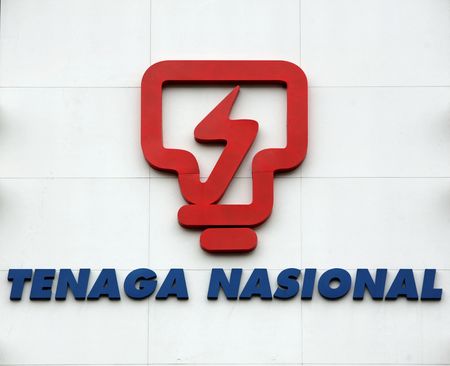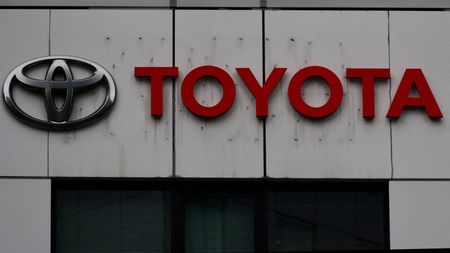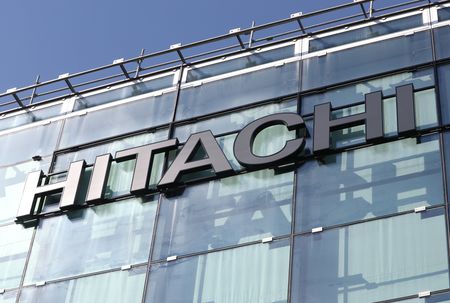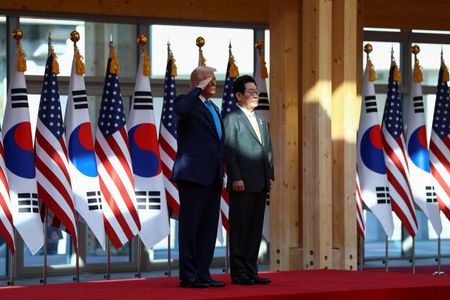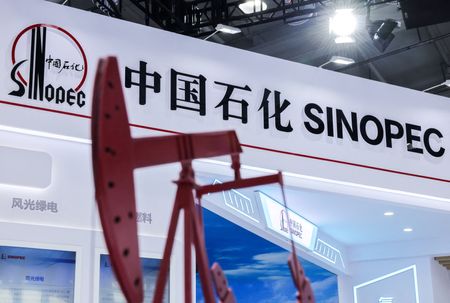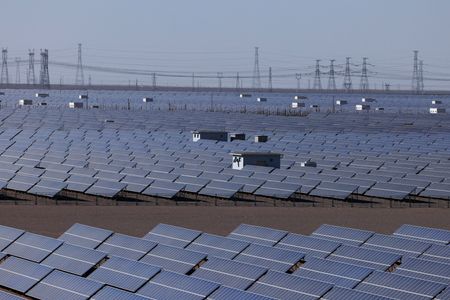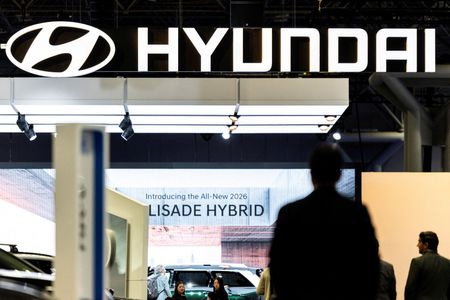By Sudarshan Varadhan
SINGAPORE (Reuters) -Malaysia will focus on a mix of solar and gas-fired power generation as it shifts away from coal, the chief executive of state utility Tenaga Nasional (TNB) said on Wednesday, adding that the renewable source would help keep costs down.
The Southeast Asian nation of over 35 million people has been cranking up its coal-fired power fleet to keep electricity costs low, but plans to boost the use of natural gas and solar – the former being more flexible but the latter cheaper.
“The cost-per-unit for solar is actually much cheaper than gas and coal. The best position is that we have a good mix so that the affordability will be addressed,” TNB CEO Megat Jalaluddin told Reuters in an interview.
MALAYSIA MAY NEED LNG IMPORTS IN FUTURE
Malaysia is expected to add 6-8 gigawatts of gas-fired capacity and more than double its renewable capacity of 9 GW as it looks to cut dependence on coal from 2029. Coal currently accounts for 43% of Malaysia’s annual power output, while gas makes up about 37% and solar over 2%, data from energy think-tank Ember shows.
The country is the fifth-largest exporter of liquefied natural gas, but has said it could start importing the superchilled fuel this decade, amid rising power demand from data centres.
Jalaluddin said he expected gas consumption by the power sector to rise to around 1,000 million standard cubic feet per day (MMSCFD) by 2030 from around 700 MMSCFD currently, forcing utilities to switch to pricier LNG imports to address incremental demand.
Malaysia currently depends almost entirely on its relatively cheap local natural gas supply for power generation, and per-unit costs of LNG-fired power are about 29% more expensive than local gas-based electricity, he said.
Separately, Malaysia is pushing data centre developers to invest outside the southern Johor state – home to two-thirds of its 4,000 megawatt data centre capacity, and new data centres with over 500 MW capacity are coming online in central Pahang state and Melaka next year, Jalaluddin said.
“As owner and operator of the grid, we would like to see infrastructure built in a balanced manner throughout the country,” he said.
(Reporting by Sudarshan VaradhanEditing by Mark Potter)

